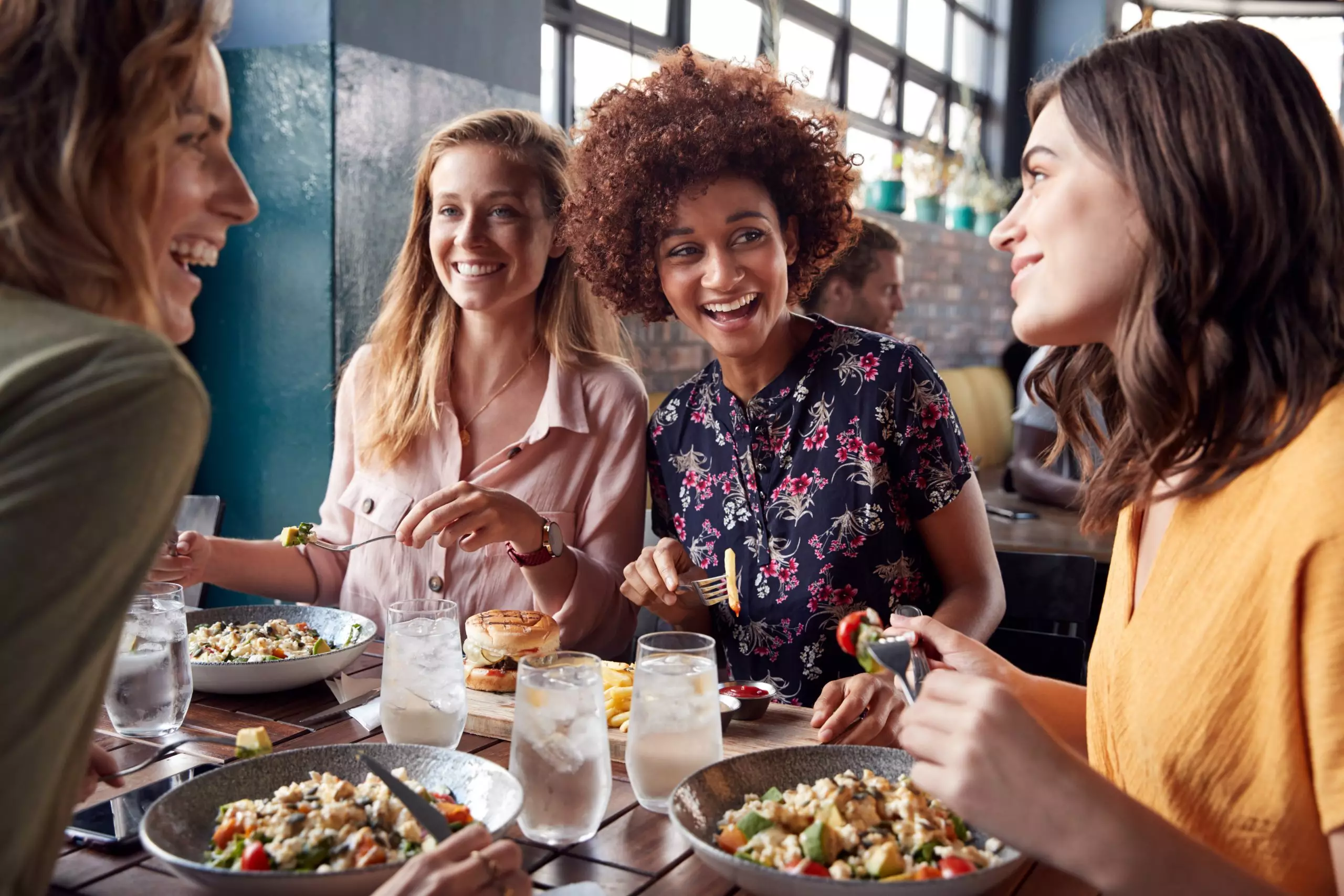How To Enjoy Eating Out at Restaurants On a Kidney-Friendly Diet
If you are on a kidney-friendly diet, you may find it challenging to go out to eat and feel limited by dietary needs. Understanding your specific restrictions on sodium, potassium, phosphorus, or protein and how that equates to restaurant food and drinks is important. Here are a few useful guidelines on dining out with chronic kidney disease (CKD) that will help you learn how to eat healthy while enjoying meals out with family and friends.
How can I be prepared?
The more knowledgeable you are about the particulars of your new diet, the better. The first thing to do is to work with your renal dietician to find out what foods are best for you and in what portion sizes. Ask for their advice about dining out, too. They’ll likely be familiar with local restaurants and their menus, and they can give you specific recommendations.
Planning is also helpful. If you know you’ll be eating dinner out, you can adjust your earlier meals accordingly. In doing so, you can prevent yourself from going over your sodium, phosphorus, potassium, and protein limits, as well as feeling like you’re depriving yourself during the meal at the restaurant.
Some eateries ask that you call ahead if you have specific dietary needs that require a special meal. Most restaurants are happy to make adjustments and have heard similar requests many times before.
Eating out is still possible—and enjoyable!—with chronic kidney disease. Discuss the best nutrition options for your specific case and stage with your renal dietician. Image from Shutterstock.
What are some common kidney-friendly requests when dining out?
Four common requests by people on a specialized diet include asking for the restaurant to:
- Hold the salt
- Put ketchup, mustard, mayonnaise, salad dressing, sauce, and/or gravy on the side
- Omit cheese on burgers and sandwiches
- Leave out monosodium glutamate (MSG), mostly found in Asian cuisine
Don’t be afraid to ask your server about how specific dishes are prepared and what ingredients are used. For portion control, it’s perfectly acceptable to split an entrée with your dining companion or ask for a box to take half of it home. You can also ask if half portions are available.
Stay ahead of your CKD
Responsum for CKD empowers people with kidney disease through community, knowledge, and shared experiences
What do I do about protein?
If your diet requires that you limit protein, remember that the following are high in protein:
- Red meat
- Poultry
- Fowl
- Fish
- Dairy products
- Eggs
- Beans, lentils, and other legumes, such as peanuts
Cured meats and fish, such as bacon, ham, and lox, are not only high in protein, but also high in salt. Ask for smaller portions or request a substitute, whether as an entreé or a side dish.
What are some safe substitutions?
Instead of solely focusing on what you should avoid, it’s important to understand what tasty and satisfying choices are available that fit within a kidney-friendly diet. Here are some healthy options for you to consider when dining out.
General tips and substitutions
- Egg scrambles and omelets with low-potassium vegetables, such as mushrooms or squash, are better choices than:
- Scrambles/omelets with meat or cheese
- Breakfast burritos
- Fast-food breakfast biscuits or sandwiches
- Toast, bagels, English muffins, and croissants are better than biscuits or bran muffins.
- Pancakes, waffles, and French toast are better than home fries or hash browns.
- Jelly/jam/preserves, honey, and imitation maple syrup are better than real maple syrup.
- Apples and applesauce are better than oranges and grapefruits or their juices.
- Hot and cold cereals are better if they don’t contain bran, nuts, seeds, or wheat germ.
- Muscle meats are better than organ meats.
- Fresh lemon or lime juice, oil, and vinegar are better than pre-made salad dressings, especially creamy ones.
- Separate foods prepared to order are better than stews, quiches, and casseroles.
- Baked, steamed, grilled, and poached foods are better than fried or barbecued.
- Herbs and spices are better than salt and sugar to enhance and vary food flavors.
Beverages
Plan the amount of fluid you may have during the meal and whether you want a beverage before, during, or after the meal. Decline offers at other times. You can even turn your glass over until you’re ready for your drink so that the server doesn’t fill it prematurely.
Healthier beverage choices include:
- Non-cola soft drinks are better than colas.
- Cocktails mixed with club soda or tonic water are better than those mixed with fruit or vegetable juices or cream.
- Wine is better than beer, but remember that wine counts as fruit juice.
Salads and appetizers
Salad ingredients that are touted as healthy for the general population are not necessarily better for people with kidney disease. The next time you go to a salad bar, keep in mind that the following items are high in potassium, phosphorus, sodium, or all three:
- Spinach, tomatoes, avocado, artichokes
- Kidney and garbanzo beans
- Nuts, seeds, and dried fruit
- Olives, pickles, and relishes
- Melon, oranges, bananas, and kiwi
- Potato salad and three-bean salad
Healthier vegetable choices include:
- Lettuce, cabbage, and sprouts
- Beets, onions, and radishes
- Cauliflower
- Celery and cucumber
- Jicama
- Coleslaw, pasta salad, and macaroni salad (though these could be high in sugar)
Fast food
You can still have a fast food meal every now and again, but you’ll need to plan in advance, as most items on a fast food menu are heavily salted. Look up a fast food restaurant’s nutrition information online before ordering. This way, you’ll be able to easily tell which foods have less or no salt.
Other fast food ordering tips include:
- Grilled chicken breast, turkey, and roast beef are better than a burger or anything fried.
- A junior-size sandwich or burger is better than a full-size one.
- Avoid or limit ketchup, barbecue sauce, and other condiments.
- Tuna or chicken salad are good choices, but be mindful of the portion size.
- Avoid fries, onion rings, baked beans, potato salad, hash browns, and tater tots.
- Salads are fine, but if using dressing, limit the amount.
- Unsweetened tea and non-cola soft drinks are better than colas or fruit juices.
- Don’t “super size” anything.
Desserts
Many people consider dessert to be the most important part of a meal, especially when dining out. It’s still a good idea to be choosy with your desserts, though, you don’t need to fully restrict or deprive yourself from enjoying a sweet treat.
Here are some healthier dessert options:
- Pastries and confections are better if they don’t contain chocolate, caramel, or coconut.
- Desserts—like berries, strawberry shortcake, and gelatin desserts—are better than those with bananas, oranges, or kiwis.
- Sugar cookies, vanilla wafers, and butter cookies are better than brownies, macaroons, or snickerdoodles.
- Light sorbets are better than ice cream.
Ethnic cuisines
Ethnic cuisines and specialty dishes—particularly as prepared in the United States—can be high in sodium, potassium, phosphorus, sugar, and other unhealthy nutrients for people with CKD. When you’re seeking culinary variety, here are some suggestions to keep your kidney-friendly diet on track.
Ethnic cuisines and specialty dishes can be high in sodium, potassium, phosphorus, sugar, and other unhealthy nutrients for people with CKD. Image from Shutterstock.
Chinese food
- Request no MSG.
- Choose steamed rice over fried rice.
- Do not add soy sauce. Many dishes are already prepared using this high-sodium sauce.
- Avoid fried dishes and appetizers.
- Choose steamed vegetables that are low in potassium, such as snow peas, string beans, water chestnuts, bean sprouts, and bok choy.
- Soups are usually high in sodium and may add undesired fluid weight.
- The herbal tea is fine to drink, but it may be served by the pot, so be aware of your fluid intake.
Japanese food
- Request no MSG, and avoid soy sauce.
- Foods grilled on skewers are a good choice, as are tofu dishes, as long as they are not dipped or marinated in high-sodium sauces.
- Avoid salty soups, such as miso.
- Sushi is good for its small portions, but limit the raw fish and stick with fresh vegetables (cucumber, carrot, and mushrooms), and avoid avocado and cream cheese.
- Watch your fluid intake when drinking tea.
Mexican food
- Leave the sodium- and potassium-rich chips and salsa alone. This includes salsa verde.
- Chili-based salsa is safe as long as it does not contain tomatoes.
- Avoid guacamole, beans, and Spanish rice. Vegetables or salads are good substitutes.
- Tacos, tostadas, and fajitas are all good choices, but be mindful of your protein intake.
- Tortillas are better than bread.
- For dessert, sopapillas (fried dough) with honey are low in potassium and phosphorus.
Asian Indian food
- Tofu is fine, but avoid beans, lentils, and other legumes.
- Tandoori and curried chicken are good choices, but keep your portions small.
- Yogurt is often served as a side dish, but it’s dairy, so it’s best to avoid it.
- Choose low-potassium vegetables; your dietitian can provide a list of these.
- Avoid milk- and cream-based drinks and desserts.
Italian food
- Italian bread is fine and so is dipping it in olive oil.
- A little bit of lemon butter sauce is ok. Avoid tomato sauces and cream sauces.
- Pass on the salty antipasto salads, cured meats, and pickled vegetables.
- Request oil and vinegar for your salad instead of dressings.
- Chicken and fish are better choices than red meats, like sausage.
- Limit your cheese intake. One spoonful of Parmesan or Romano cheese is ok for flavor.
- Italian ices are fine for dessert, but count them as a fluid.




